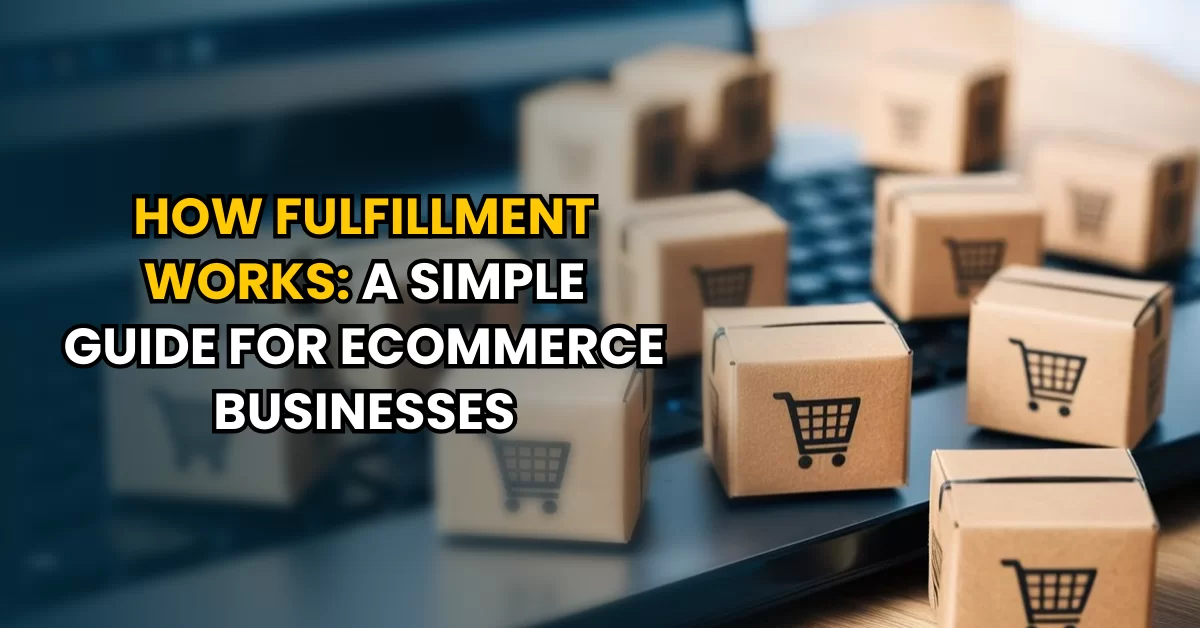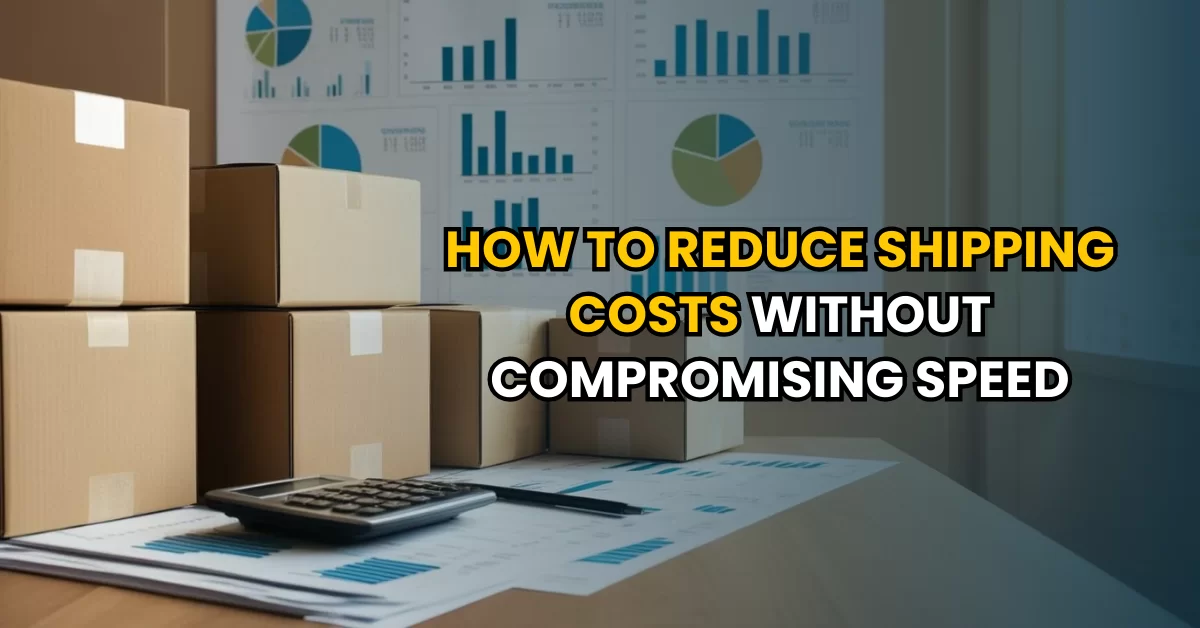When a customer clicks “Buy Now,” the journey is just beginning. What happens next? That’s where things get interesting. That one click sets off a chain reaction—picking, packing, shipping, tracking—all the behind-the-scenes work that gets an order from a warehouse to a doorstep.
Get it right, and customers barely notice—it just works. Get it wrong, and you’ll hear about it in bad reviews, refund requests, and lost sales. In fact, for Canadian shoppers, shipping speed and cost are among the top reasons they choose one online store over another. And With e-commerce revenue projected to reach $104 billion by 2029. businesses with streamlined and faster fulfillment will have a major edge.
So, how does fulfillment actually work? And more importantly, how can you make it work better for your business? This guide breaks it all down—different fulfillment models, common challenges, and how to optimize your process for faster deliveries, lower costs, and happier customers.
Let’s dive in!
Understanding e-commerce fulfillment
What is fulfillment?
At its core, fulfillment is the process of getting products into customers’ hands after they place an order. It covers everything from receiving inventory and processing orders to shipping and handling returns. In the e-commerce world, fulfillment is the behind-the-scenes engine that makes online shopping possible. Without it, businesses wouldn’t be able to deliver products efficiently, and customers wouldn’t get the fast, seamless service they expect.
A brief history of fulfillment
Fulfillment has been around for centuries—long before e-commerce existed. In the early days of retail, merchants handled fulfillment manually, storing goods in backrooms and personally delivering them to customers. As trade expanded, postal services and railroads enabled faster, broader distribution, making fulfillment more structured.
In the 20th century, catalog shopping introduced a new form of fulfillment. Companies like Sears and Montgomery Ward mailed thick catalogs to households, allowing customers to order by phone or mail. Orders were then picked, packed, and shipped from centralized warehouses—a process that laid the groundwork for modern e-commerce fulfillment.
With the rise of e-commerce in the late 1990s and early 2000s, fulfillment transformed dramatically. Companies like Amazon revolutionized the industry with massive fulfillment centers, advanced logistics networks, and automation. Today, fulfillment is powered by sophisticated technology, real-time tracking, and global supply chains, allowing businesses of all sizes to compete in the fast-paced online marketplace.
Why fulfillment can make or break your business
Fulfillment isn’t just about moving products from point A to B—it directly impacts customer satisfaction, brand trust, and business growth. Here’s why it matters:
- Speed drives loyalty – More than 45% of shoppers say fast delivery influences whether they buy from a brand again. If your shipping is slow, customers will find an alternative.
- Scaling requires smart fulfillment – A system that works for 10 orders a day won’t hold up when you’re handling 1,000 orders during peak season. Without a scalable fulfillment strategy, delays pile up, inventory runs out, and customer complaints flood in.
As online shopping continues to grow, businesses that optimize their fulfillment—whether by improving speed, reducing costs, or offering flexible delivery options—gain a real competitive edge. Whether you’re shipping from a small garage or managing a multi-warehouse network, fulfillment is the key to keeping customers happy and scaling successfully.
How the fulfillment process works
Now that we understand what fulfillment is and why it matters, let’s look at how it actually works. Whether you’re shipping orders from your own space or relying on a fulfillment partner, the process follows a series of key steps. Each one plays a role in ensuring that products move smoothly from storage to your customers’ hands—without delays or mix-ups. Here’s what happens behind the scenes.
Step 1: Receiving inventory
Before you can ship anything, you need to have inventory on hand and accounted for. This step is all about getting products into your system, whether they’re arriving from a manufacturer, supplier, or another warehouse.
What happens:
- If you manage your own warehouse, you’ll be unloading trucks, counting and inspecting products, and logging them into your inventory system to ensure everything matches what was ordered.
- If you use a third-party logistics provider (3PL), they handle this step for you. You ship your products in bulk to their warehouse, and their team receives, stores, and tracks them.
- Proper reception ensures that you have the right products, in the right quantities, and in good condition, so you’re not dealing with surprises later on.
Why it matters:
- If items are miscounted or damaged during receiving, it can cause major fulfillment errors later on, like overselling products you don’t actually have in stock.
- Many businesses use barcode scanning and warehouse management systems (WMS) to keep inventory organized and update stock levels in real-time, reducing the risk of mistakes.
- For businesses shipping across Canada, splitting inventory between Eastern and Western fulfillment centers can speed up delivery times and cut shipping costs by keeping stock closer to customers.
Key takeaway: If the receiving process isn’t accurate, it can throw off your entire fulfillment operation—leading to stockouts, delays, and unhappy customers.
Step 2: Storage & inventory management
Once your inventory is in the warehouse, the real work begins—keeping it organized and easy to track. Without a solid system, orders can get delayed, items might go missing, and customers could end up buying products that aren’t actually in stock. Good inventory management keeps everything running smoothly and ensures that when an order comes in, the right product is ready to go.
What happens:
- Inventory is stored in specific bins, shelves, or pallet locations based on SKU (Stock Keeping Unit) so items can be quickly found and picked when needed. The more organized the system, the faster the fulfillment process.
- Businesses use inventory management systems (IMS) or warehouse management systems (WMS) to track stock levels in real-time, preventing surprises like selling out of a product without realizing it. These systems help keep everything up to date, so you’re never caught off guard.
- As products sell, some warehouses move stock from bulk storage to forward picking areas to make fulfillment even faster. Popular items are kept within easy reach to reduce picking time and get orders out the door quicker.
Why it matters:
- Poor inventory management leads to stockouts and order delays—and studies show inventory accuracy in retail is only about 63% without proper tracking. That means nearly four out of ten items could be miscounted, which can cause headaches for both businesses and customers.
- Regular cycle counts (spot-checking portions of inventory) help prevent discrepancies and lost products, ensuring your records match reality. Catching issues early saves time and frustration down the line.
- Cloud-based inventory software keeps online store stock levels updated in real time, so customers never buy something that’s out of stock. This helps prevent refunds, backorders, and unhappy shoppers.
Key takeaway: If you don’t know what’s in your warehouse, you can’t ship it! Staying on top of inventory tracking keeps fulfillment fast, accurate, and hassle-free.
Step 3: Order processing (pick & pack)
Now things start moving! As soon as a customer places an order, the fulfillment system kicks into gear to find, pack, and prep the item for shipping. This step is all about speed and accuracy—getting the right product into the right box and out the door as fast as possible.
What happens:
- Picking: A worker (or an automated system) tracks down the ordered items by following an optimized route through the warehouse. Large fulfillment centers use scanners, carts, or even forklifts to speed things up and reduce picking mistakes along the way.
- Packing: Once picked, the items are brought to a packing station, where they’re boxed up, padded (if needed), and sealed for shipping. Many businesses use this step to add personal touches—custom branding, receipts, or even a thank-you note to enhance the unboxing experience.
- Labeling: The final step—attaching a shipping label with tracking info. This ensures the package is scannable, traceable, and ready to be sent off to the customer without any mix-ups.
Why it matters:
- Getting the wrong item in a package is an easy way to lose a customer—order mistakes mean more returns, extra costs, and a poor experience that can hurt your brand.
- Most fulfillment centers use barcode scanning or automated verification to double-check orders and prevent costly errors before shipping.
- Smarter warehouse organization—keeping popular items closer to packing stations—can make fulfillment much faster, cutting down on time wasted walking back and forth.
Key takeaway: The smoother this process, the happier your customers! A well-run pick-and-pack system means fewer mistakes, faster delivery times, and a better shopping experience overall.
Step 4: Shipping & last-mile delivery
Now that the package is packed and labeled, it’s time for the final and most crucial step—getting it to the customer. This is where fulfillment meets real-world logistics, and while it might seem like the easy part, shipping is where a lot can go wrong. Delays, lost packages, and high last-mile costs make this step one of the biggest challenges in e-commerce fulfillment.
What happens:
- Packages are picked up by a national carrier (e.g., Canada Post, Purolator) or regional carriers like Ecom Express or dropped off at a shipping hub, where they enter the carrier’s network. Many businesses schedule daily pickups to keep orders moving without delay.
- Customers receive a tracking number, so they can monitor their order in real time, giving them peace of mind and reducing the number of “Where’s my order?” inquiries. Some businesses even send automated shipping updates to keep customers in the loop.
- The package travels through the carrier’s network—moving between sorting centers, planes, and delivery trucks—before finally reaching its destination. Depending on the service level chosen (standard, express, same-day), this journey can take anywhere from a few hours to several days.
Why it matters:
- Last-mile delivery is the most expensive and time-sensitive part of fulfillment, accounting for 53% of total shipping costs. Since drivers make individual stops instead of bulk deliveries, it can be slow, costly, and inefficient—especially in high-density urban areas and remote regions.
- Businesses that diversify their carriers can balance speed, cost, and reliability, offering customers options like standard, express, and same-day delivery. This approach reduces the risk of shipping delays and helps manage peak-season demand more effectively.
- In Canada, 12% of parcels face delays due to weather, traffic, or carrier issues. Providing real-time tracking and proactive shipping updates helps businesses reduce “Where’s my order?” inquiries and maintain customer trust.
Key takeaway: Shipping is where your fulfillment process meets the real world. A smooth, well-managed shipping experience keeps customers happy, while delays and poor tracking can turn them away for good.
Step 5: Returns & reverse logistics
Not every order ends with a happy unboxing—sometimes, customers need to send things back. Whether it’s the wrong size, a defective product, or just a change of heart, returns are a reality of e-commerce, especially in industries like fashion and electronics. But here’s the thing: a smooth return process can turn a frustrated customer into a loyal one.
What Happens:
- Customers send the item back, either using a prepaid return label or by requesting a return through your system, making it as easy as possible for them to start the process without extra hassle.
- The returned product is inspected to see if it can be restocked, repackaged, or needs to be disposed of, ensuring only sellable items go back into inventory while damaged goods are handled appropriately.
- A refund, exchange, or store credit is processed based on the return policy, with many businesses offering flexible options to keep the customer happy and encourage future purchases.
Why it matters:
- A seamless return process builds trust—45% of online shoppers say easy returns influence their decision to buy. If returns are a headache, customers may hesitate to shop with you again.
- Handling returns efficiently saves money—products that can be resold should be quickly re-added to inventory to prevent losses and ensure stock levels stay accurate. The longer they sit, the more money you lose.
Key takeaway: Returns don’t have to be a loss—they’re an opportunity. A hassle-free return experience keeps customers coming back, and a well-managed system ensures you’re not throwing away perfectly good inventory.
Putting it all together: The full fulfillment cycle
Receiving → Storage → Order Processing → Shipping → Returns—each step must work efficiently for a smooth operation. Understanding each fulfillment step helps you find weak spots and improve efficiency.
Making the right fulfillment choice
A seamless fulfillment process isn’t just about shipping—it’s the backbone of your business. When done right, it enhances customer trust, improves efficiency, and sets you apart from the competition.
- Are your shipping speeds keeping up with customer expectations?
- Is your inventory management system preventing stockouts and delays?
- Are you leveraging automation to streamline fulfillment and reduce errors?
If you’re facing delays, rising costs, or scalability challenges, it might be time to rethink your fulfillment strategy. The right partner can take logistics off your plate—so you can focus on growing your brand.
Partner with Ecom Logistics
Ecom Logistics is more than just a 3PL provider—we’re your fulfillment partner, helping you to streamline operations, reduce costs, and scale effortlessly. We understand that fulfillment isn’t just about shipping—it’s about delivering great customer experiences while keeping logistics simple and efficient.
As one of the most trusted 3PL partners in Canada, we provide tech-driven, scalable, and sustainable fulfillment solutions designed to fit your business needs—whether you’re shipping across Canada, or managing high-volume peak seasons.
Why businesses choose us
- Strategic warehouse locations – With fulfillment centers across major locations in Canada, we help you reduce shipping times, lower costs, and reach customers faster.
- Advanced technology – Our seamless API integrations sync with your WMS and e-commerce platforms, ensuring seamless and faster operations.
- Scalable solutions – Whether you’re handling seasonal peaks, rapid business growth, or high order volumes, our flexible fulfillment network scales with you.
- Comprehensive fulfillment services – From e-commerce and B2B fulfillment to subscription boxes, kitting, and Amazon FBA support, we handle everything from storage to last-mile delivery.
- Sustainable logistics – Our eco-friendly packaging, and energy-efficient warehouses help businesses reduce their carbon footprint without compromising efficiency.
- Expert logistics team – With years of industry experience, our team ensures every order is picked, packed, and shipped with precision—so you can focus on growing your brand.
📦 Let’s optimize your fulfillment! Contact us today to see how we can help.
Frequently asked questions
1. What’s the best fulfillment method for a growing e-commerce business?
The right fulfillment method depends on your order volume, customer locations, and business goals. If you’re handling a small number of orders, self-fulfillment might work. As you scale, a third-party logistics (3PL) provider can help manage storage, packing, and shipping efficiently. Many businesses opt for a hybrid approach, mixing in-house fulfillment with outsourced solutions for flexibility.
2. How can I speed up order fulfillment without increasing costs?
Optimizing fulfillment speed without raising costs requires efficient inventory management, strategic warehouse locations, and automation. Using a 3PL with fulfillment centers near key customer regions can reduce shipping times, while automated order processing and batch picking improve efficiency without adding extra labor costs.
3. What’s the difference between self-fulfillment and using a 3PL?
Self-fulfillment means handling storage, packing, and shipping in-house, which offers full control but can become overwhelming as orders grow. A 3PL takes over these tasks, leveraging warehouse networks, carrier discounts, and fulfillment automation to improve efficiency and reduce shipping costs while allowing businesses to focus on growth.
4. How do I ensure my fulfillment process can scale during peak seasons?
To handle peak-season demand without delays, businesses should forecast order spikes, optimize inventory levels, and work with a 3PL that offers flexible capacity. A fulfillment partner with multiple warehouses and automated processes ensures smooth operations during high-demand periods like Black Friday and the holiday season.




